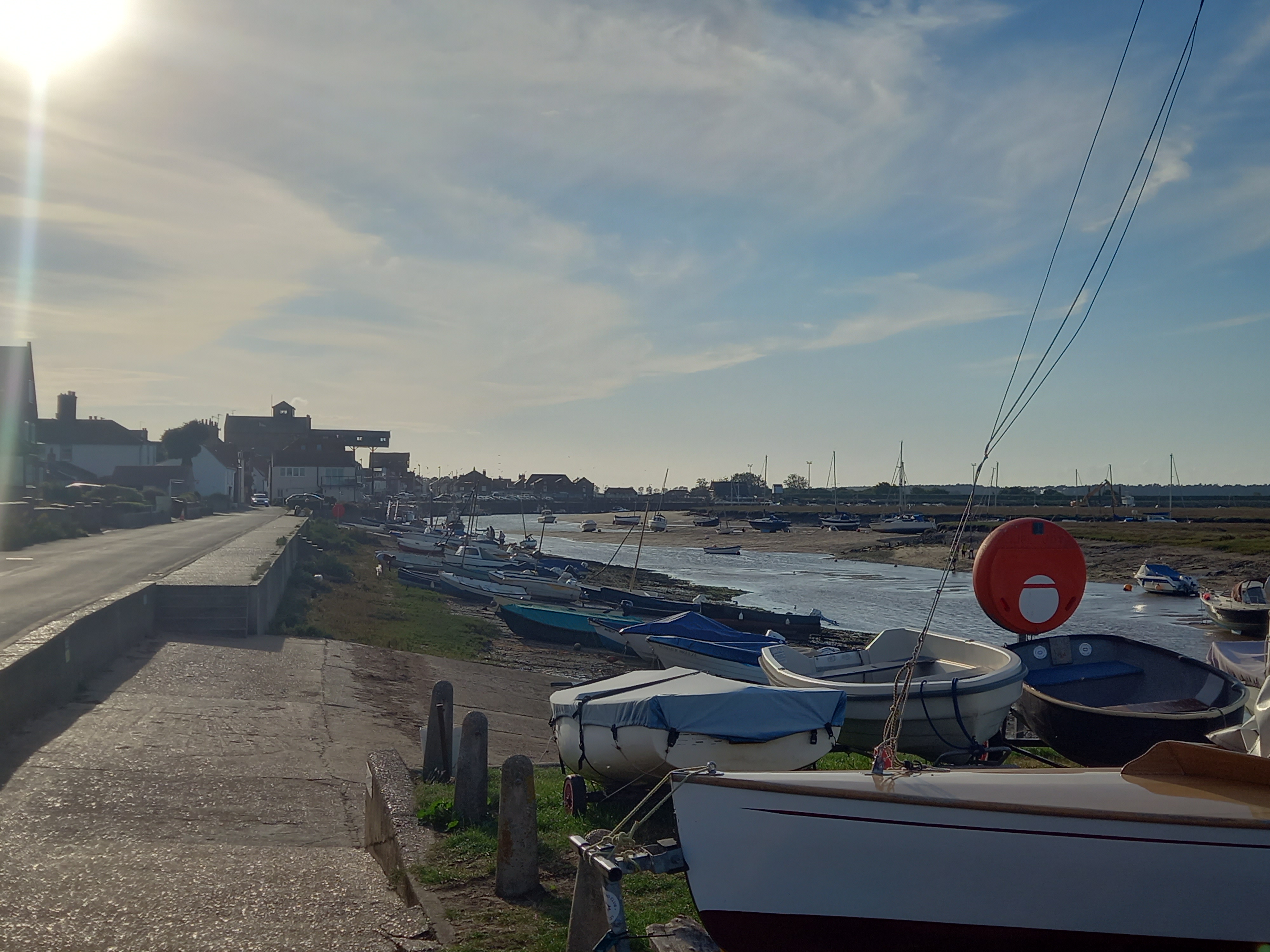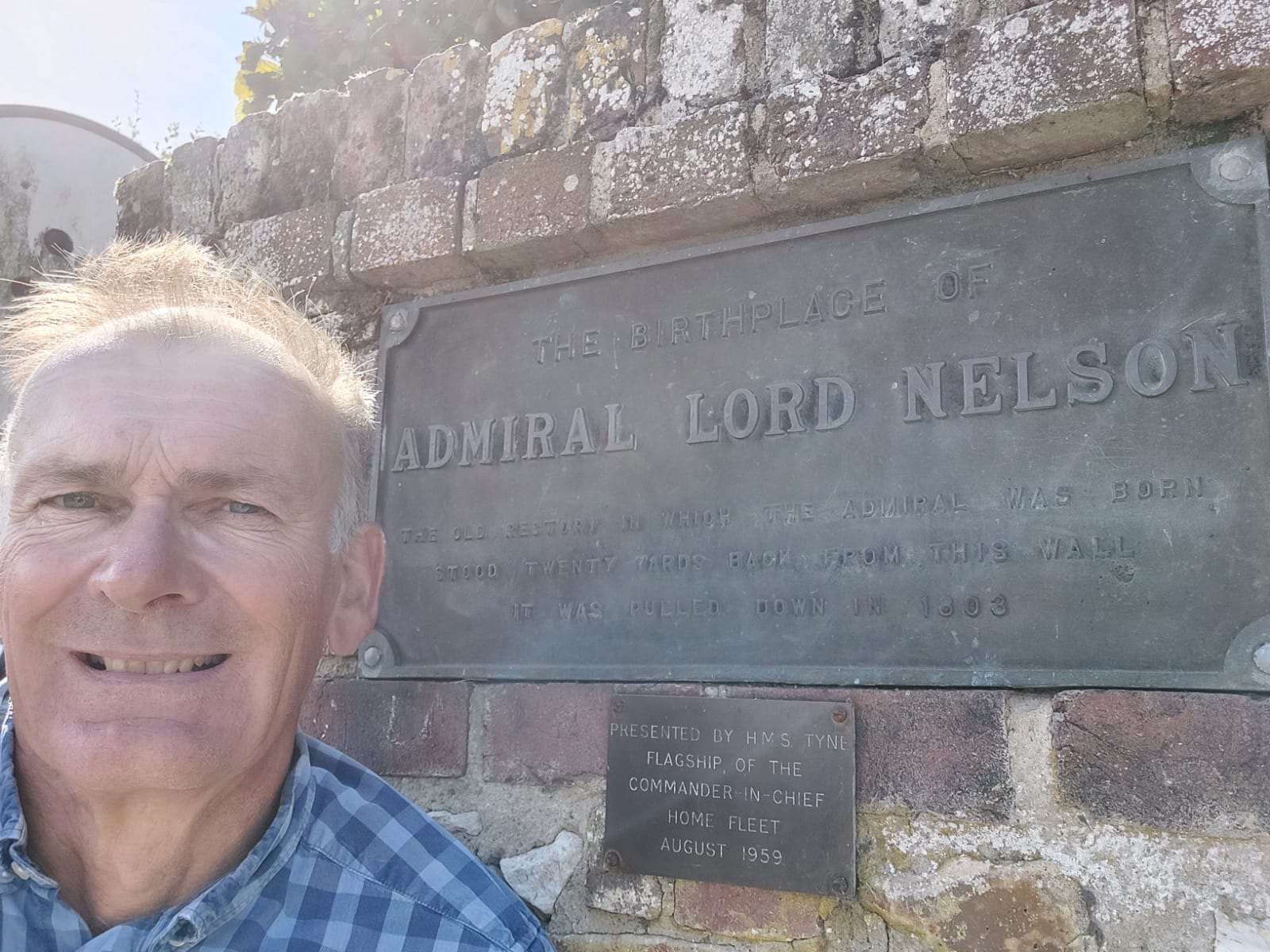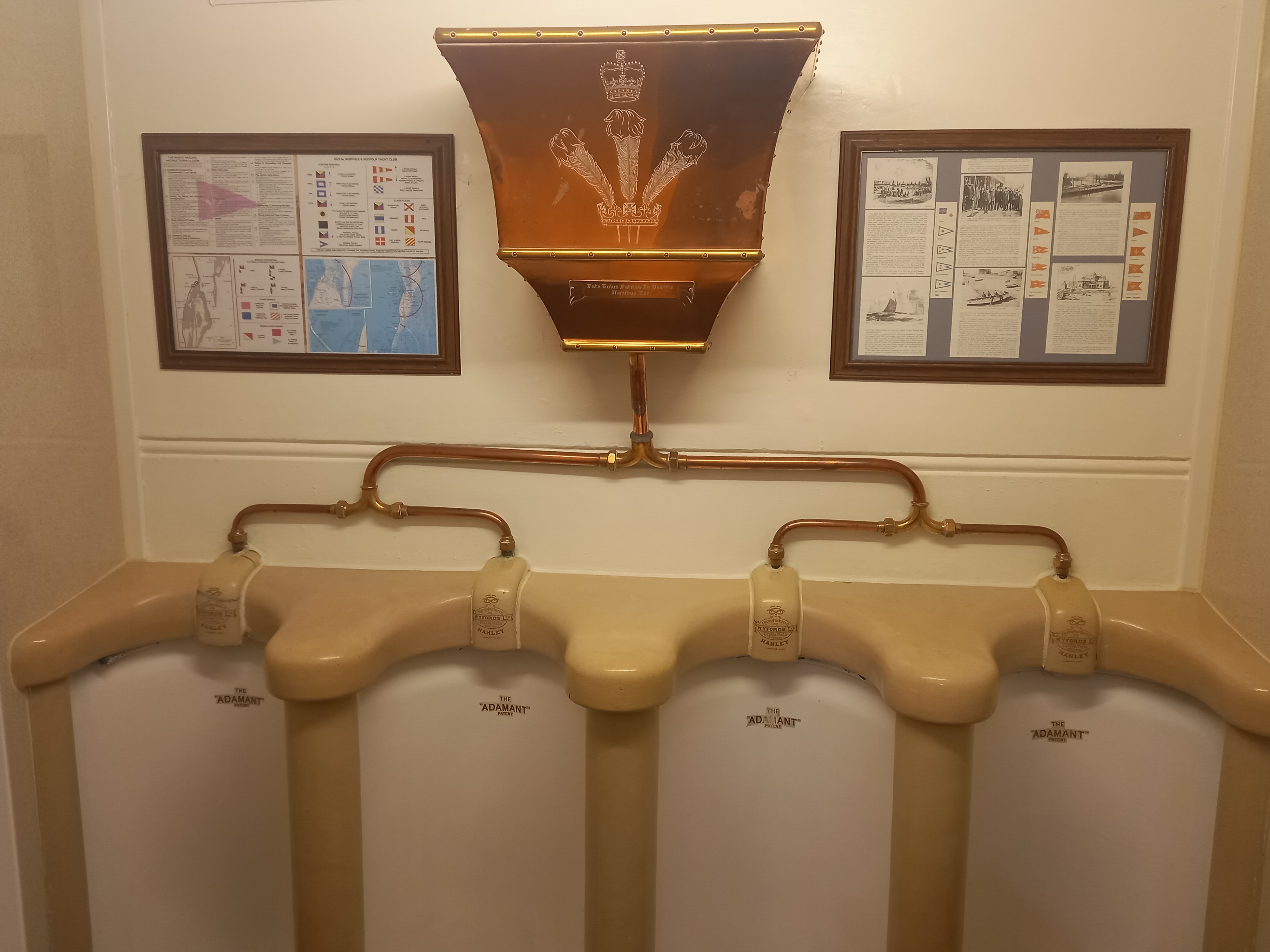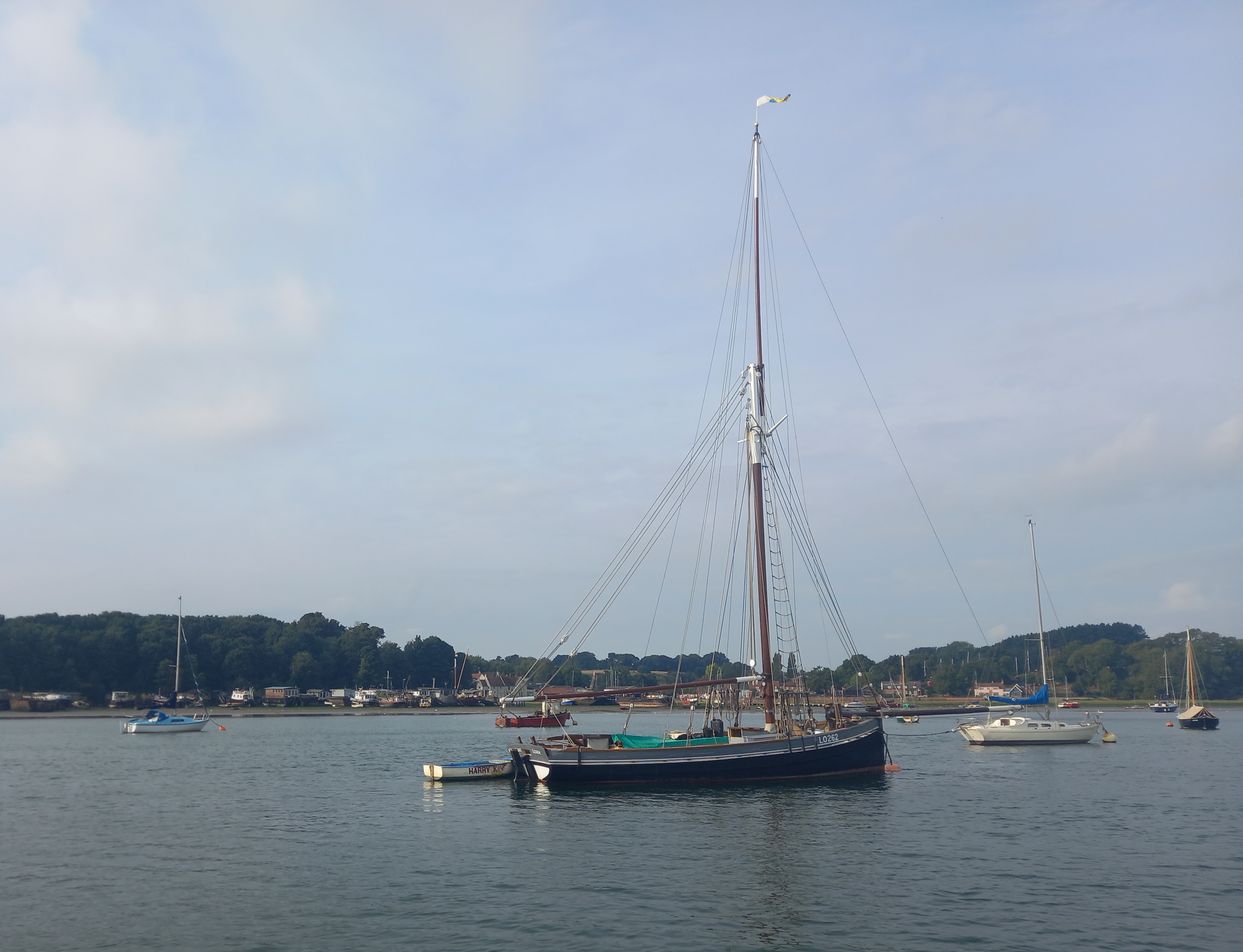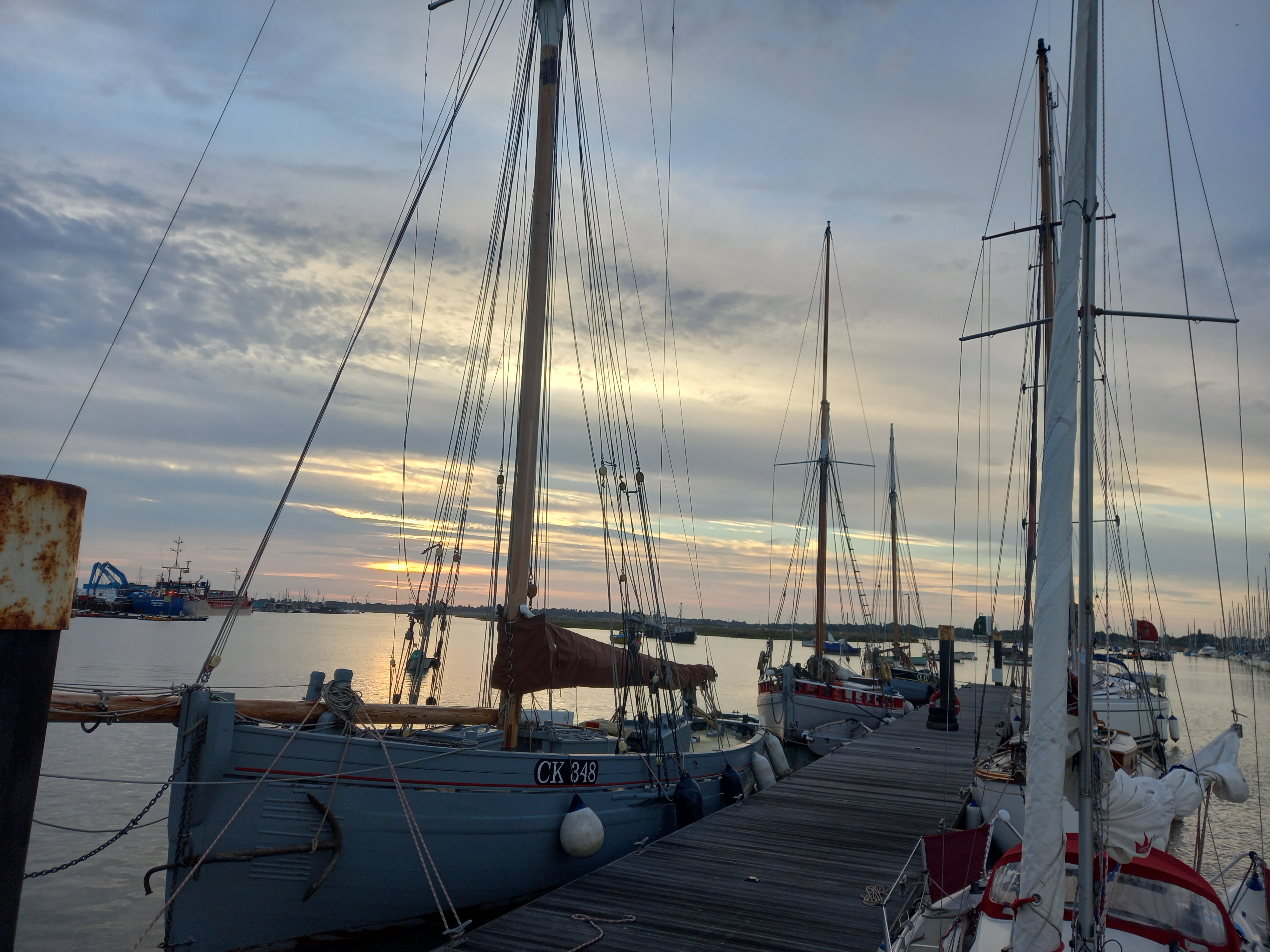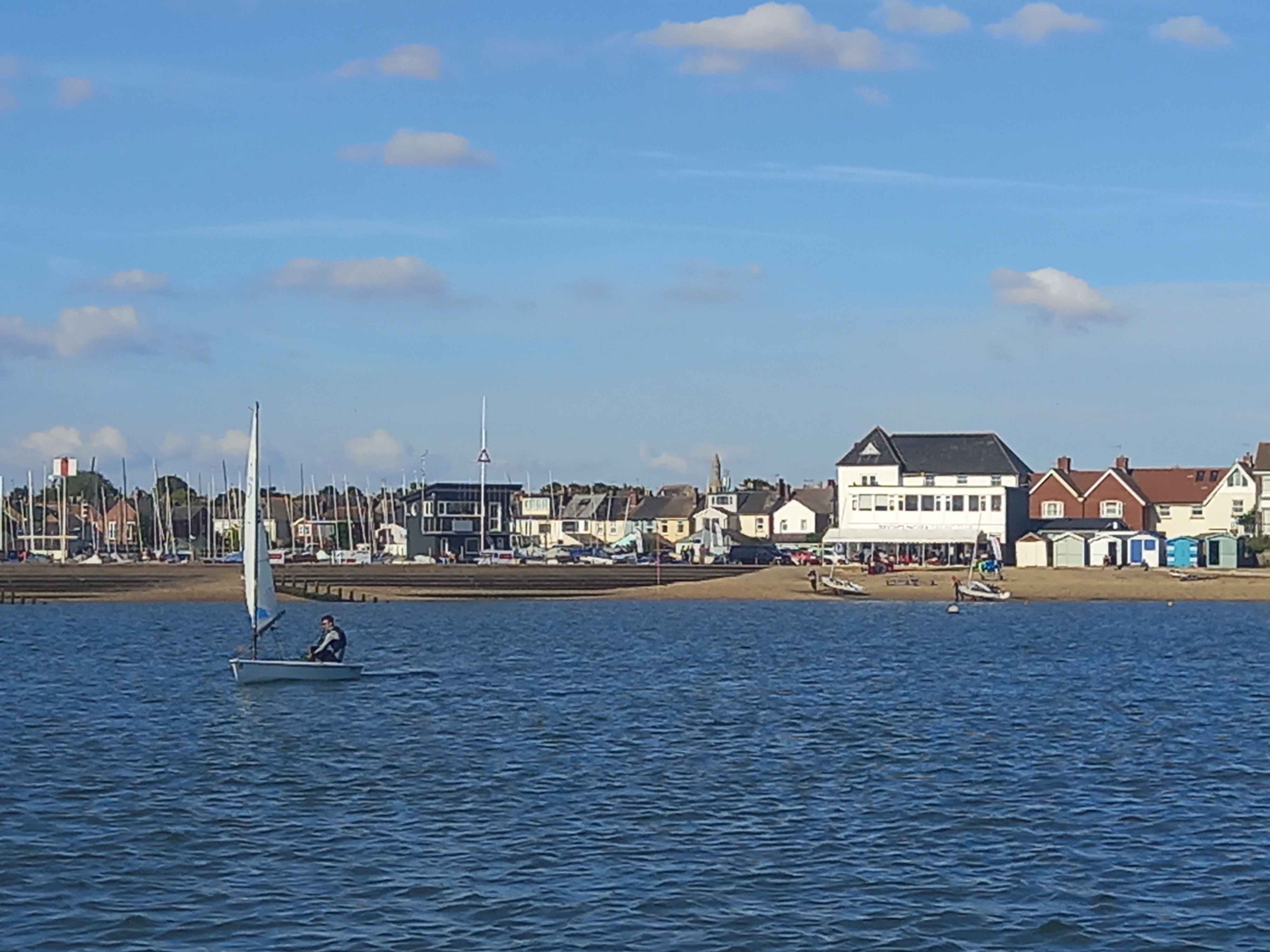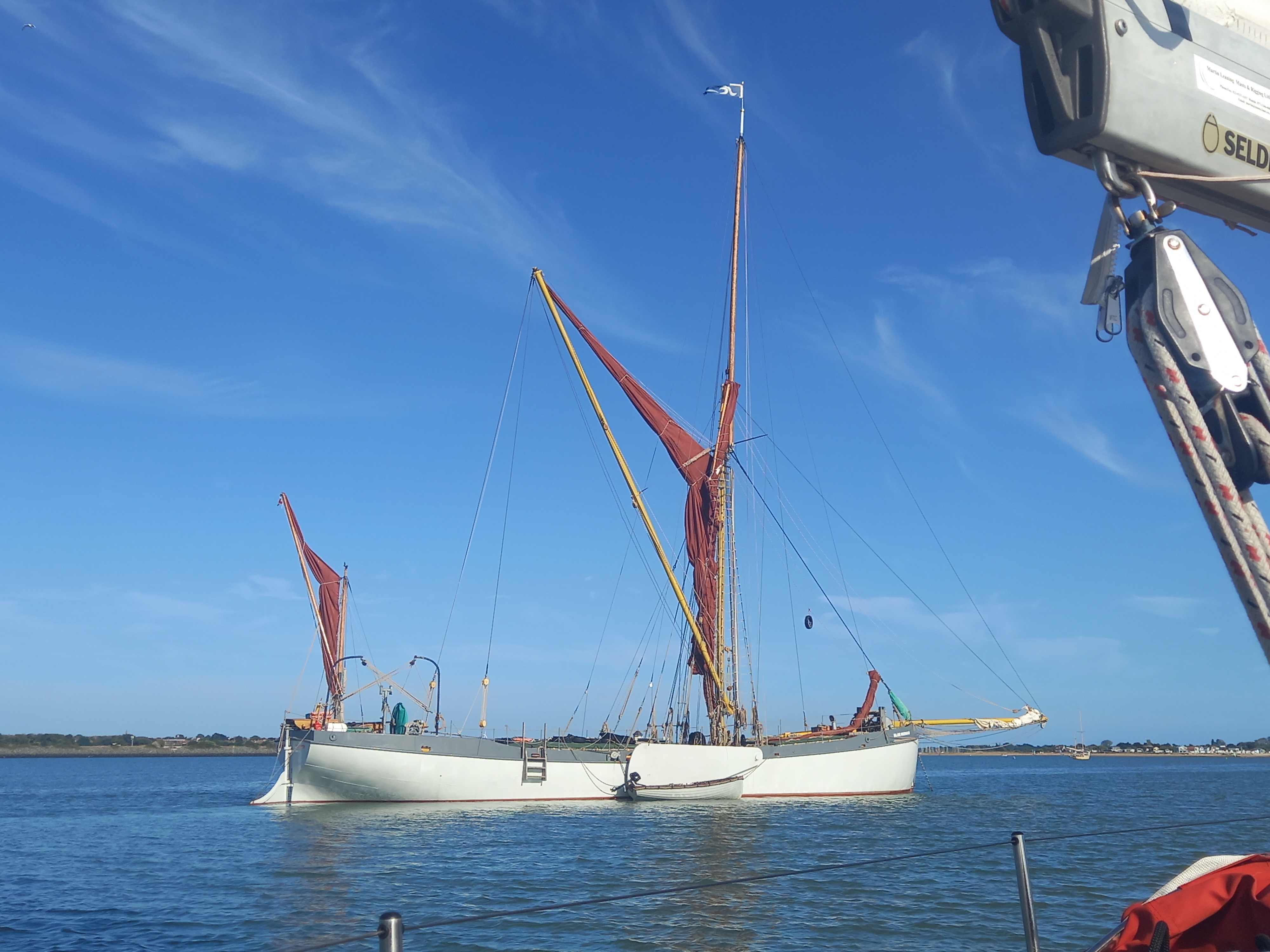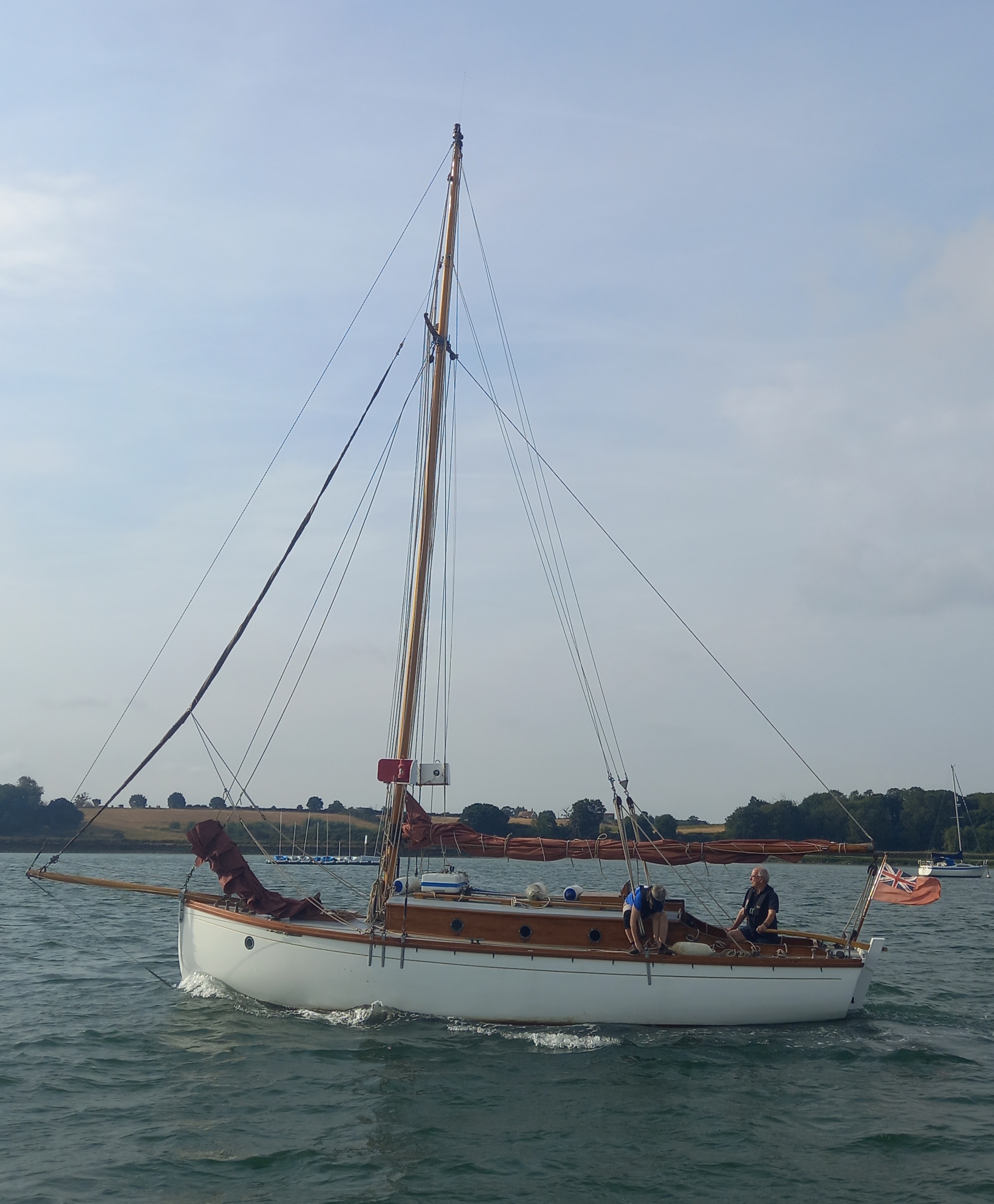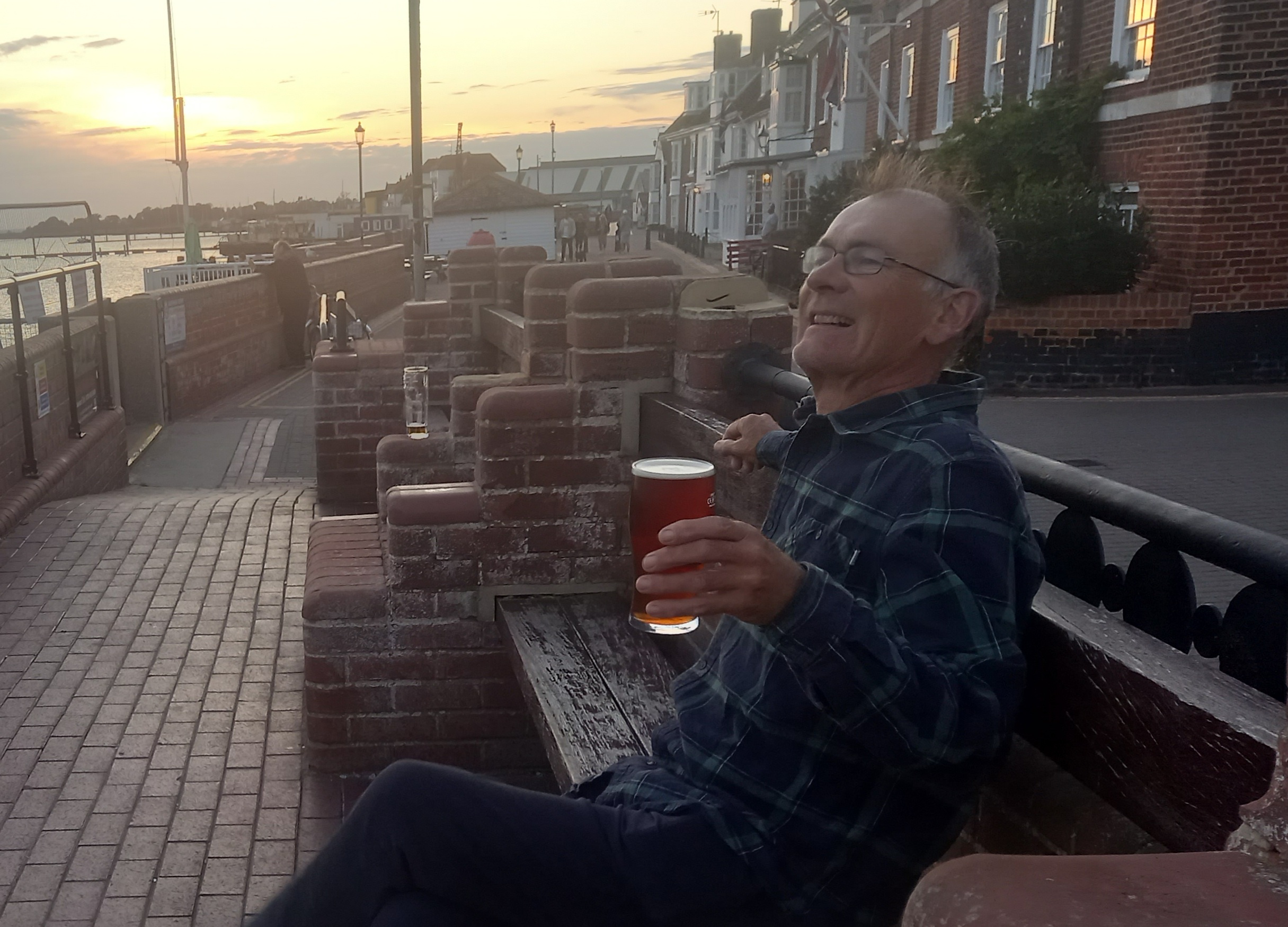Having ‘fuelled ship’ and found a replacement for our gas canister (there is a shortage of small blue Calor gas cylinders across the north of UK!) we departed Grimsby and headed south easterly, across the entrance to the Wash and towards the north Norfolk coast. It was a quiet day with only wind farms and RAF Eurofighters for company and by 7 pm we were off the entrance to Wells-next-to-sea.
The previous day I had spoken to the harbourmaster at Wells and he confirmed that we should have no difficulty entering the meandering channel on a rising tide but I had not noted that there may be an issue crossing the bar at the entrance! The north-easterly breeze had persisted for almost a week and as we loitered off the entrance we were in a considerable swell, probably over two metres, and having called the harbourmaster by VHF he recommended that we wait until we had a little more tide before entering.
We were eventually ‘cleared in’ by the harbour master at around 2030 and we motored in through the breaking waves with our hearts in our mouths. It was now dark and looking astern we could see the white water of breaking waves and we knew that if we had an issue with the engine, or if we touched the bottom in one of the wave troughs, we could easily have found ourselves being pushed sideways with the surf and onto the beach. Of course, all was well and as soon as we were through the waves the harbour master guided us by VHF along the buoyed channel to the port; his guidance was invaluable as the channel regularly moved and was very different to that shown on our charts and chart plotter.
Wells-next-to sea is a convivial town with an interesting mix of family holiday makers, many accommodated in a very large but discrete caravan park nearby and many ‘second-home’, probably London-based visitors. I hope to return, both to enjoy the fabulous sandy beaches but perhaps to also explore some of the small channels and waterways that extend from the harbour. It is also a great area for walking (it’s nice and flat!) although it was Nigel who spent the day on foot visiting beaches, pine forests and Nelson’s birthplace at Burnham Thorpe.
Our departure from Wells was much less dramatic than the arrival, in sunshine and with a gentle breeze and we motor-sailed in a gentle breeze and sunshine past Cromer, Great Yarmouth and into Lowestoft and the Royal Norfolk and Suffolk YC for the night.
Saturday night in Lowestoft was pretty grim for these two grumpy old sailors! After a quick drink in the surprisingly grand yacht club, we headed off into town; it looked pretty ‘down’ and we found ourselves in a Wetherspoons amongst some ‘interesting company’ so we weren’t sorry to leave and head down the coast past the Sizewell B nuclear power station, past Felixstowe container port up the river Orwell to the Royal Harwich YC’s marina. The Orwell was beautiful on a lovely late summer evening, it felt reminiscent of the Fal or Dart with yachts on moorings lying along either side of the river and fields and woods down to the riverbanks.
We walked through a potato field or two from the marina to spend the evening in the picturesque village of Pin Mill with its classic boats, famous Butt and Oyster pub and Swallows and Amazons connections, this was the setting for ‘We Didn’t Mean To Go To Sea’.
Sunday morning was beautiful and we had a very pleasant sail down the river, into the Suffolk Yacht Harbour to fill up with diesel and collect a replacement autopilot and then out and towards the shallows off Brightlingsea.
The approach to Brightlingsea was enhanced by the lovely sight of several traditional fishing smacks and Thames barges and we were also pleased to see Arthur Ransome’s yacht, Nancy Blackett alongside too. www.nancyblackett.org We had followed Nancy Blackett out of the Orwell earlier and learned that she was on her way to St Katherine’s Dock, London, for a classic boat event the following weekend. We enjoyed Sunday evening exploring Brightlingsea and found some interesting characters motoring around the harbour in a children’s sand pit (see pictures!)
We were planning to head up the Thames to London but wanted to get ourselves ready to ‘catch’ the tide up-river so we decided to make the short hop around to Burnham on Crouch and then across to Queenborough. We quickly realised that sailing the Thames estuary is not straightforward! Our route to Burnham (to the southwest) involved a long passage to the East first before we could clear the shallows and head back up the river Crouch. We also had the sight and sounds of heavy gunfire in Shoeburyness range to remind us to stay ‘on-track
Burnham seemed to be a pleasant river-side town and is the home to a number of very active yacht clubs although on this Monday evening all was quiet and we were left admiring racing yachts on their moorings and drinking in a couple of extremely quiet pubs before heading back to Little Scarlet in the rather soul-less marina to the west of the town.
From Burnham we had another day navigating through the shallows and brown waters of the Thames. We saw an increasing amount of commercial shipping heading in and out of the Thames and by late afternoon passed the wreck of the ammunition ship, USS Richard Montgomery (www.bbc.co.uk/news/uk-england-kent-60416597) and berthed in Queenborough, just south of Sheerness.
Queenborough is ideally placed for a ‘stop-over’ before the long trip up the Thames to London and we had a quick look around and enjoyed a pint in ‘The Admiral’s Arm‘, a fun pub with some interesting memorabilia showing Queenborough’s history as a naval town before an early night ready for a pre-dawn departure to catch the flood tide up the river.
